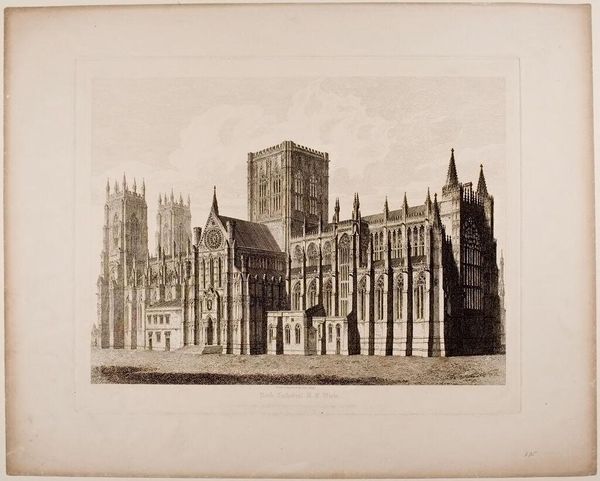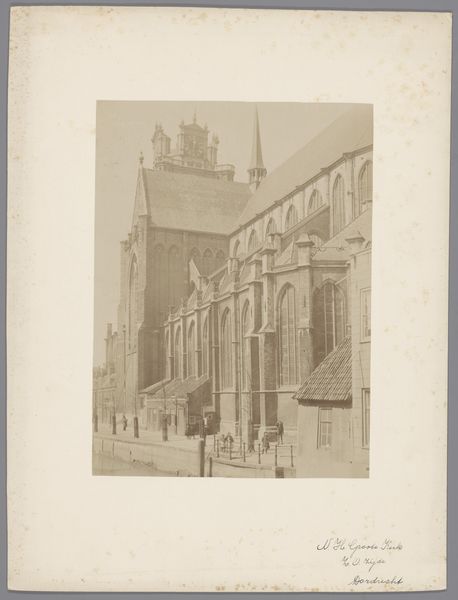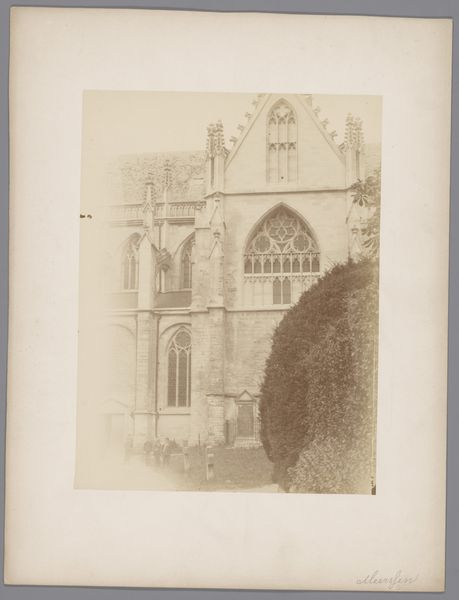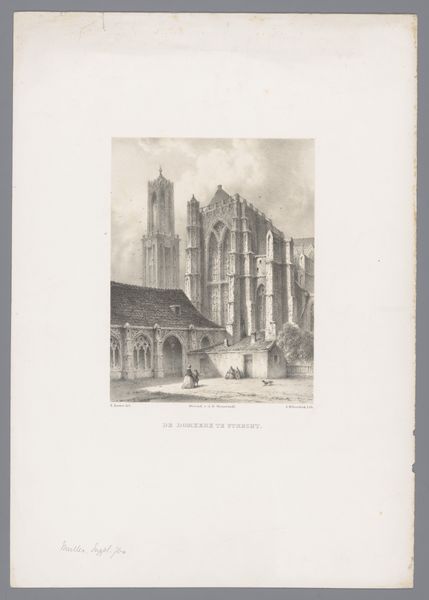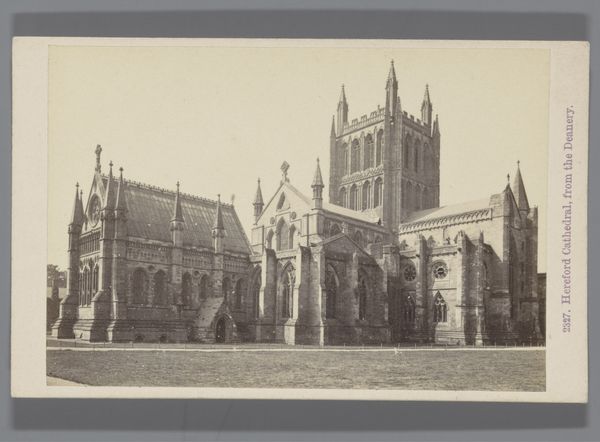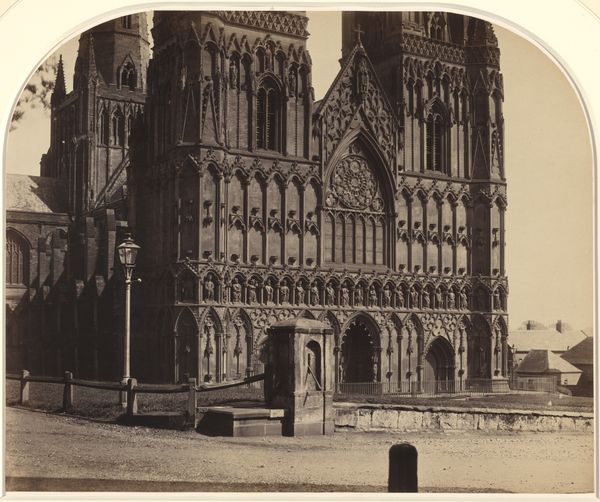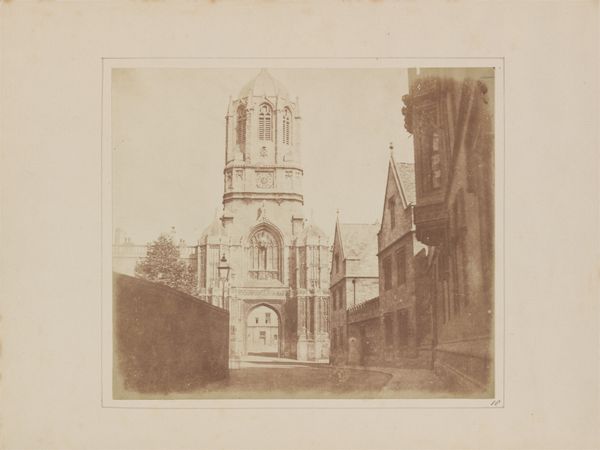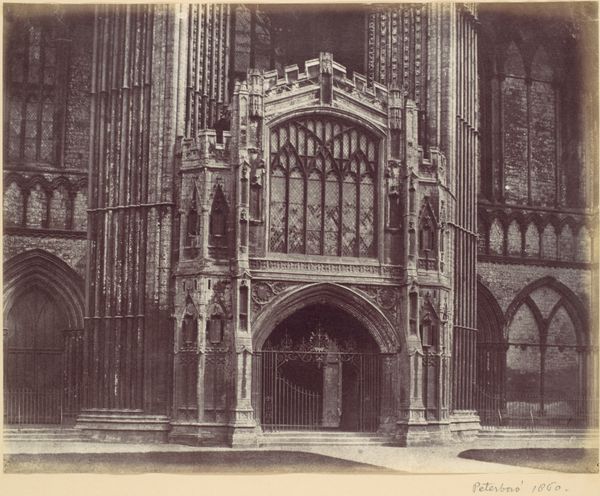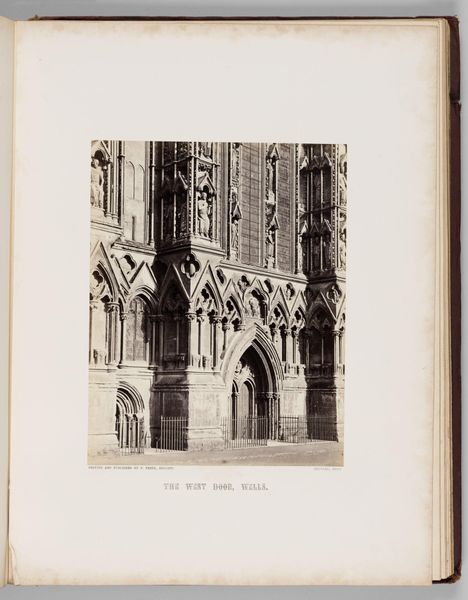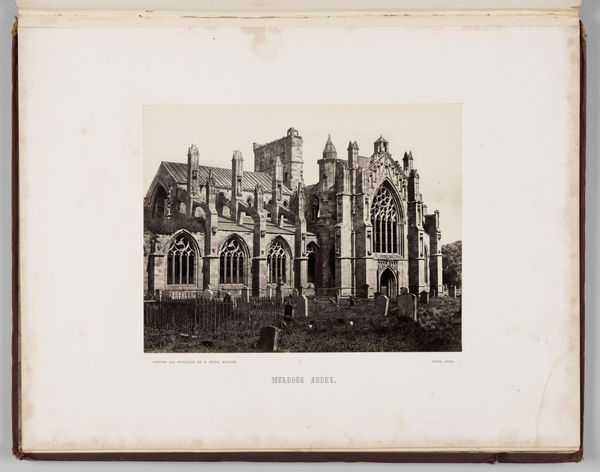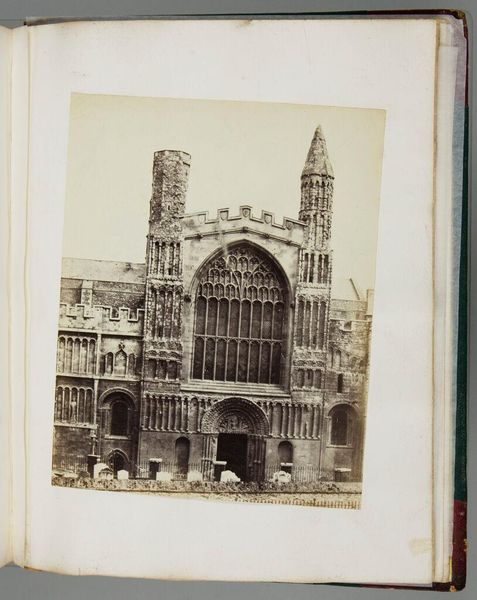
print, photography, albumen-print, architecture
# print
#
photography
#
romanticism
#
cityscape
#
albumen-print
#
architecture
Copyright: Public Domain
Curator: This is "Westminster Abbey," an albumen print photograph taken between 1845 and 1846 by Nicolaas Henneman. Editor: It's immediately striking, isn't it? Almost otherworldly. The tones are muted, giving it a haunted, sepia quality that hints at histories embedded within those stones. Curator: The play of light and shadow is key here. Notice how the geometry of the abbey, the verticality of the towers and the intricate latticework of windows create a complex, self-referential visual language. The lines draw the eye upward, emphasizing the structure's towering presence. Editor: But a towering presence built, of course, on the backs of laborers, of empire. I find myself considering how buildings like Westminster Abbey functioned as powerful symbols of authority and control during the mid-19th century—a period of intense industrialization and social stratification. This photograph, taken relatively early in photography's history, is complicit in monumentalizing structures inseparable from inequality. Curator: Perhaps, but consider also the technical skill Henneman brings to bear. He's mastering a new medium to capture the material texture and formal grandeur of the architecture. The details are incredible, achieved through a difficult and nascent printing process. He gives form to architectural mass using the tonal precision made newly available through photographic technology. Editor: And how do we contextualize this formal grandeur? It's not neutral. The architecture reflects very specific power dynamics inherent to that historical moment. Are we to admire its detail without interrogating the narratives it supports? The economic systems which enabled its construction, for example, are not necessarily self-evident if we are simply focusing on surface materiality and tone. Curator: The interplay of these formal structures creates something beyond simple representation. The density of the building materials is given pictorial depth. By manipulating perspective and light Henneman evokes a sense of Romantic sublime that echoes painters of the era. Editor: The conversation, for me, always loops back to empire. A visual signifier for a certain class, race and gender that had power then - and, truthfully, still largely does. This image might look antiquated now, but it reproduces very old ideas about what is valuable, and whose narratives are prioritized in its valuation. Curator: I can see how you might make that claim. Still, viewed formally, this albumen print demonstrates the complex structural possibilities embedded within architecture that photography can reveal through carefully chosen viewpoint and lighting. Editor: Which just reminds me how crucial it is that we continue decolonizing our institutions and asking questions about whose stories are told and how... and whose are systematically omitted, even here, within a photograph like this.
Comments
No comments
Be the first to comment and join the conversation on the ultimate creative platform.
